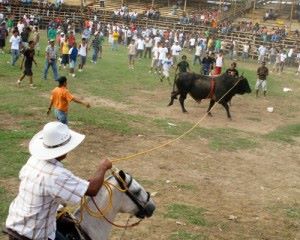By: Genna Marie
Guanacaste is one of the most important provinces in all of Costa Rica – and not just because it’s the country’s busiest tourist sector. This region is home to some of the most gorgeous beaches, the best hiking trails and arguably the most beautiful farmland in Central America.
But Guanacaste didn’t always belong to Costa Rica. Around 1200 AD, Chorotega Indian tribes migrated here (most likely from central Mexico). They created complex settlements and produced lots of pottery and ceramic hand crafts for future archeologists to uncover.
In 1519 the Chorotega’s world came crashing down when the Spanish conquered the region and decimated the indigenous with plagues like influenza and smallpox. Survivors lucky enough to escape death by disease were then forced into slavery in Panama and Perú, where they worked the gold mines.
The Spanish ruled this area more or less unchallenged for the next 300 years. Then in 1821, Central America collectively declared independence from Spain. The region that is present-day Guanacaste and the Nicoya Peninsula became a mutual territory shared between Costa Rica and Nicaragua.
Three years later, a peaceful vote among people living in Guanacaste decided that the populace preferred to be a part of Costa Rica rather than Nicaragua. On July 25, 1824 residents of this province were officially declared citizens of Costa Rica.
Fast forward to 2014, and the country is preparing to celebrate the 190th year marking this Annexation of Guanacaste. Festivities include carnivals, food festivals and actos civicos, or civic ceremonies, consisting of traditional dances and the typical Guanacaste yell. And of course, bullfights.
Bullfights: Tico Style
http://www.youtube.com/watch?v=jJ2Qmq1SCzA
Bullfighting in Costa Rica is much more humane than in Spain, where the bull is routinely stabbed to death by Spanish matadors (matador translates to “killer” in English).
In Costa Rica, “bullfights” consist of a lone bull that usually emerges from a pen mounted by a rider. The rider falls off, and the bull proceeds to run around after dozens of Costa Ricans that attempt to dodge its angry charge. Non-bovine participants are almost exclusively male and buzzed off one-to-many Imperial cervezas.
Aside from the bulls having to put up with some annoyance and mild abuse (like having trash thrown at them or being kicked by spectators hanging off the sides of the ring), the bull always reigns victorious. Ambulances and first aid specialists are always on hand to assist the unfortunate “bull fighters” that were too slow (or too drunk) to get out of the bull’s way.
Check out this incredible long form article, The Legend of Malcrianza, to learn all about Costa Rica’s most infamous killer bull.

Best places to celebrate Annexation Day in Guanacaste 2014
NOTE: These date are from 2014! You’ll have to look up the new ones for this year.
Expo Liberia: July 18-27, Liberia
The biggest Guanacaste Day party in the country.
Indigenous Dance of La Yegüita: July 22nd, Nicoya
Check out this typical dance at 5:30pm in Nicoya
El Sabor de Guanacaste Food Festival: July 25, Playa Flamingo
Click here for more info.
Festival de la Tortilla: July 22, 23 & 24 Corralillo, Nicoya
Click here for more information about this competition to see who can make the best tortilla.
Vamos a Turistear! July 24, Nicoya
This walking tour of historical sites in Nicoya departs at 2pm and 7pm.
Click here for a complete list of activities in Nicoya.
Photo credits:
Photos by Genna Marie of Tamarindo Family Photos


